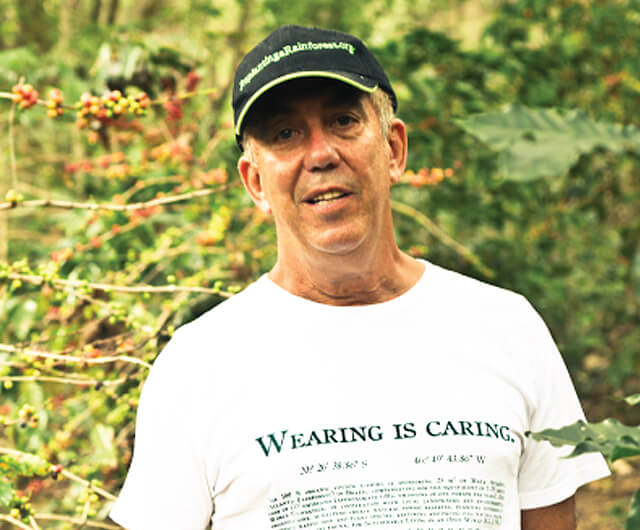
Marcos Croce, founder of the Bob-O-Link project
The Bob-O-Link project is run by the Croce family. It brings together a number of growers with the aim of cultivating sustainable, high-quality coffee in a system that respects the environment and people.
Marcos, can you tell us about the Fazenda Ambiental Fortaleza?
The story of FAF began in 2001. The farm had been in my wife's family for 5 generations. At the time, we were living in Chicago. When my father-in-law passed away, the whole family was debating the future of the farm. My father-in-law was a great coffee grower and produced quality coffee.
But there was only one coffee shop and prices were very low at the time. The family was in dire straits. Most of the surrounding farms were bankrupt, and we were living in the United States.
How did you decide to take over the farm?
We had a long discussion with Sylvia, my wife. There were two things I wanted to give our children: roots and wings.
So we decided to keep the farm, but only if it was organic, and to become farmers, to learn and to take up the challenge.
Where does the name Bob-O-Link come from?
I lived on Bob-O-Link Street for 8 years and later discovered that it was a bird. This migratory bird flies every year from the USA to Brazil. What a coincidence!
Only in Brazil, crops were being reduced more and more to monoculture. If we continued down this path, there would soon be no more bees, no more drinking water... and no more Bob-O-Link. I loved this image and thought that we should create a farm adapted to these birds.
Do you see the FAF farm as a place of education?
Yes, that's exactly it. We decided to maintain the farm as a place where we educate people, and where they learn about themselves, but also about soil and agriculture. I wanted people to learn the difference between soil and earth.
In organic farming, you're looking for organic matter and microorganisms. So you have to learn how to identify and quantify the different microorganisms to know the quality and composition of the soil.
How would you assess the project?
With the help of my son, Felipe, who trained in the USA, we learned to taste our coffees. This enabled us to know what we were doing, and to build relationships, because at the time, specialty coffee was in its infancy.
Today, we're happy to have found a way, and found partners, to take Fazenda Ambiental Fortaleza to the next level.
When we first came up with all these projects, the neighbors thought: "Either this guy's a crazy communist, or he's a visionary! Today, all these neighbors are part of our Bob-O-Link project. Everyone works with us and we help them export their coffees.
Did you like this article? Share it with your community:
